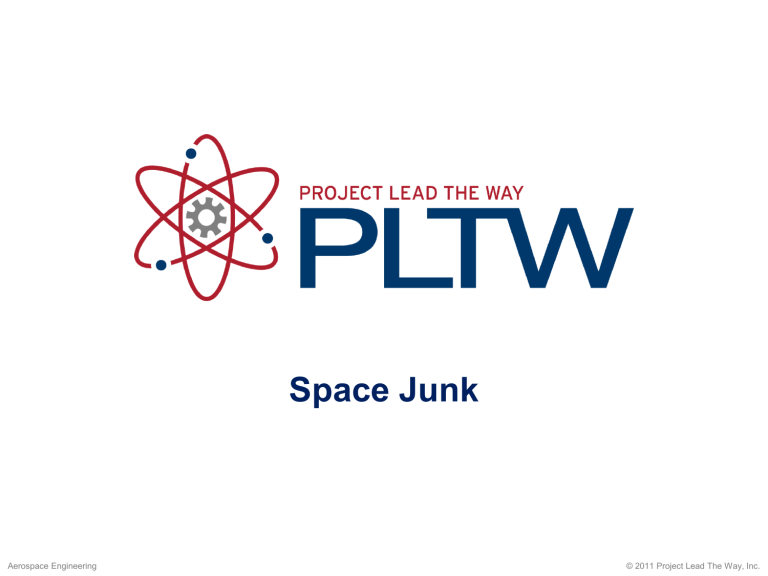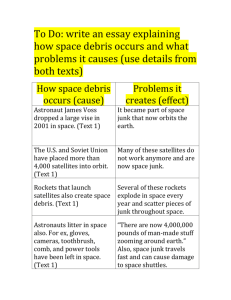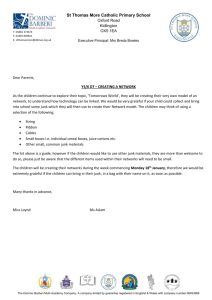
Space Junk Aerospace Engineering © 2011 Project Lead The Way, Inc. Space Junk • What is space junk? – Natural • Comets, asteroids – Artificial • Satellite break up • Paint flakes, tools, and thermal blankets • Human refuse • Statistics – 28,000 objects created since 1957 – 9,000 still in orbit (550 are useful) – 75 launches per year Space Junk Increasing 1967 2007 Space Junk Impact • Danger? – Low Earth Orbit (LEO) debris • 7 km/s = 18,000 mph • Energy – Car @ 55 mph – bowling ball @ 300 mph – 60 lb safe @ 60 mph Space Junk Impact • How long will it orbit? <200 km = days (LEO for space shuttle) 200-600 km = years 600-800 km = decades >800 km = centuries >36,000 km = forever Space Junk Tracking • Spacecraft measure objects sized < 0.1 cm – Millions of objects • Telescopes and radar tracking (> 0.5 cm) – >100,000 objects • Optical tracking (> 10 cm) – 11,000 objects • Multi-national effort – NASA Orbital Debris Program Office – European Space Operations Centre • Advise orbit changes Space Junk Impacts • Incidents – CERISE, 1996: Briefcase size 31,500 mph – South African land strike – Texas, 1997 – South Africa, 2000 – Satellite and shuttle windshield strikes Kessler Syndrome • Donald Kessler journal publication in 1978 • Satellite collision generates fragments • Fragments cause exponential increase in collisions • Growth of debris belt • Potentially blocks other craft from that altitude or above • Example: Iridium 33 and Comos 2251 collision in 2009 Space Junk Reduction • Limit creation • Limit explosions with better equipment • Graveyard orbit above popular geosynchronous orbit (GEO) • Clean up mess References Analytical Graphics, Inc. (2010). Iridium 33 – cosmos 2251 collision. Retrieved from http://www.agi.com/mediacenter/multimedia/current-events/iridium-33-cosmos2251-collision/ European Space Agency. (2010). Space junk. Retrieved from http://www.esa.int/esaCP/index.html Kessler, D. (2009). The kessler syndrome. Retrieved from http://webpages.charter.net/dkessler/files/KesSym.html Kessler, D., & Cour-Palais, B. (1978). Collision of artificial satellites: The creation of a debris belt. Journal of Geophysical Research, 83(A6). Retrieved from http://webpages.charter.net/dkessler/files/Collision%20Fr equency.pdf References National Aeronautics and Space Administration (NASA). (2009). Orbital debris educational package. Retrieved from http://www.orbitaldebris.jsc.nasa.gov/library/EducationPa ckage.pdf National Aeronautics and Space Administration (NASA). (2010). What goes up must come down. Retrieved from http://www.nasa.gov/audience/forstudents/k4/home/F_What_Goes_Up_K-4.html


